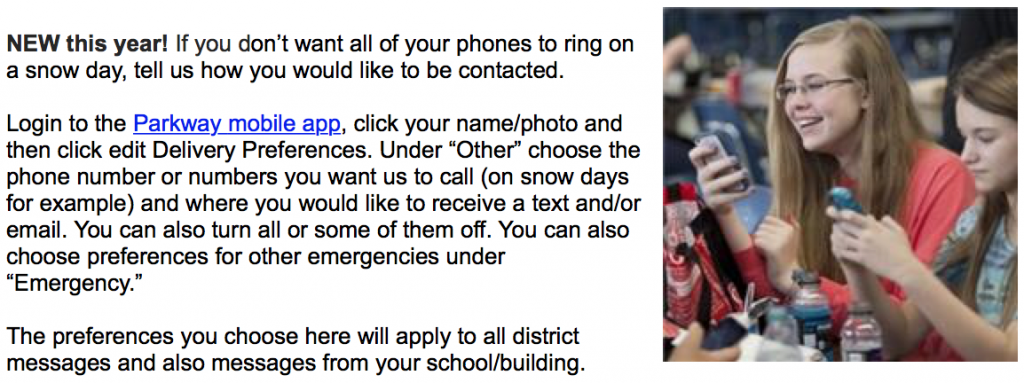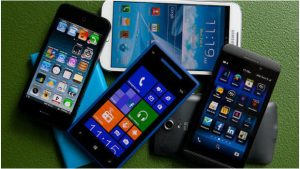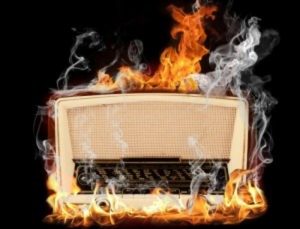 Two things happened last week that made me realize again that the advantages local radio stations traditionally had in serving their communities are being marginalized by technology. Listeners can get the critical news and information they once could only get from their hometown radio station in a multitude of places and platforms and they’re using these new technologies more every day. Now, people can listen to streaming music, hear a podcast on demand, or watch video and not have to worry about missing any important weather, news, or other information because all they need is on the phone in the palm of their hand whenever they want it. This does not bode well for local broadcasters.
Two things happened last week that made me realize again that the advantages local radio stations traditionally had in serving their communities are being marginalized by technology. Listeners can get the critical news and information they once could only get from their hometown radio station in a multitude of places and platforms and they’re using these new technologies more every day. Now, people can listen to streaming music, hear a podcast on demand, or watch video and not have to worry about missing any important weather, news, or other information because all they need is on the phone in the palm of their hand whenever they want it. This does not bode well for local broadcasters.
Where Did All The School Closings Go?
Before local TV stations stole radio’s playbook and put on early morning news shows, some lasting as long as six hours, pretty much the only place to get school closings at times like “snow days” was by listening to the seemingly never-ending list of schools being read on the radio hoping your school got mentioned. Now, school districts around the country routinely employ services to get the information about schedule disruptions and safety issues directly to parents and students, eliminating the middlemen of local media and getting updates to stakeholders much quicker and easier than having to read the crawl on the bottom of the TV screen or listen to the closing list on the radio. This is part of an email I received from my school district before the school year started. Look at all the ways they can notify parents directly. Beyond those alerts, the information gets posted to the district’s Facebook and Twitter accounts.
Here’s what a school closing announcement looks like in the school district’s app, preceded by a push notification. Note the time the notice was sent out. While I was reading this, my email, cell phone, landline, and text messaging delivered the same information. 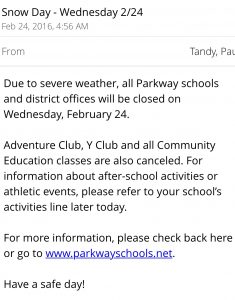
The Media Middleman Is Being Eliminated
Schools aren’t the only organizations going directly to the public with news and information. Local, state, and Federal governments and law enforcement agencies can use services like Nixle to communicate via phone, text, push notifications, and social media. They upload information to the Nixle network or the news gets delivered straight from the National Weather Service and distributed to residents based on their zip code or geolocation.
This is what text messages from the county and emails direct from the NWS look like, and people get the information at the same time (sometimes before) the media gatekeepers get it. Each kind of message has a link that goes to a mobile-optimized website, so users who just a couple of years ago might have taken a transistor radio down to the basement can now go down there with a smartphone. If they want, they can click on the links in the short messages or watch the weather coverage live through many local TV station apps, at least here in the Midwest.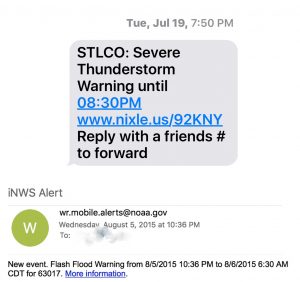
As long as there’s a wi-fi or cellular signal, former radio listeners can keep listening to their streaming music or podcast, watching their movie or even use their weather app to see the storm come in on radar, knowing they’ll get important updates pushed to them. No delay waiting for the song to end, for the one live person on duty to get the update on all the stations in the cluster, or for the EAS receiver to relay the message because there isn’t anyone in the building, because it’s after 7PM or the weekend.
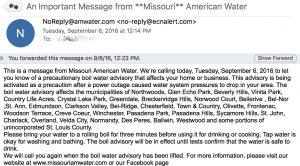 The area where I live had a situation that required residents to boil water before drinking it last week. I found out about it first via an email from the water company. I also got a text message and robocall from them, and a text from the city I live in within five minutes of the email. The water company, county Emergency Management Agency, and local police posted frequent updates on their Facebook and Twitter accounts while the boil order was in effect. I spoke with a friend at a local radio station, and they found about the boil order, which affected over 85,000 households and businesses, via a tip from a listener who was alerted by the water company phone call. It seems that the firm went straight to their users BEFORE they alerted the media.
The area where I live had a situation that required residents to boil water before drinking it last week. I found out about it first via an email from the water company. I also got a text message and robocall from them, and a text from the city I live in within five minutes of the email. The water company, county Emergency Management Agency, and local police posted frequent updates on their Facebook and Twitter accounts while the boil order was in effect. I spoke with a friend at a local radio station, and they found about the boil order, which affected over 85,000 households and businesses, via a tip from a listener who was alerted by the water company phone call. It seems that the firm went straight to their users BEFORE they alerted the media.
According to eMarketer, there are over 207,000,000 smartphones in use in the US, with the number growing every day. Add to that the millions of feature phones that can get calls and text messages, and a majority of the population has direct and almost instantaneous access to the information that used to be filtered through radio (and TV) stations. Sure, there are more radios than phones, but my educated guess is that most people, especially those under fifty, spend more time within arm’s reach of their phone than they do with a radio playing next to them.
It Didn’t Have To Come To This
It makes me both sad and angry that the radio industry, to a certain extent, LET all of this happen. While radio was concerned with using websites and apps primarily as another revenue stream or place for bonus spots, keeping everything that was said on the air pithy so as not to anger the PPM, getting HD Radio in every car, and putting FM chips in phones, broadcasters blindly allowed those who really did understand how to communicate in the 21st century and benefit consumers subvert their position as the place to find out important, sometimes life-saving local information. To many “regular people”, it doesn’t matter if they’re holding a transistor radio or iPhone in their hand as long as they’re getting a benefit they need at that moment from the device. And, as a rule in 2016, radio doesn’t always deliver information as quickly or with as much detail as the right app, text alert, or email is capable of doing.
Radio’s annual convention is next week, and in recent years 70% of its attendees would talk about how radio’s never been stronger and will be around forever because nearly everybody listens to radio at least once a week and 30% of the attendees might wring their hands about how could they ever compete with streaming, podcasts, Snapchat, on-demand video, OTT packages, and short attention spans. Maybe the Big Thinkers who run the show will include those kind of topics in next year’s agenda because those are the kind of issues that people who want radio to be a viable business in twenty years need to devote some serious attention to.
I checked the Radio Show’s session list, and there’s nothing planned about how to fend off new methods of information delivery and keep listeners tuned to their radios rather than their phones, tablets, and computers. But they ARE going to have a session serving S’mores, so they’ve got that going for them, which is nice.
Maybe they’ll light a campfire at that session and tell stories about how scary it is to think about the future, because clearly a number of broadcasters must feel that way.

